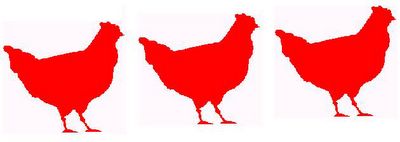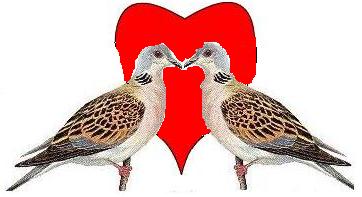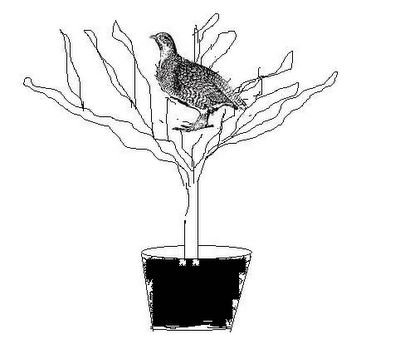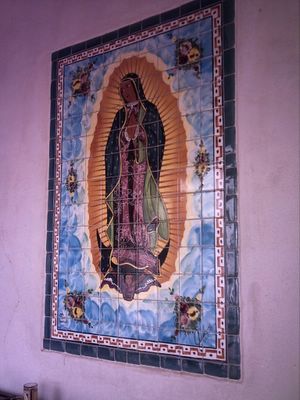Advent E-cards
St. Nicholas E-Cards
Christmas E-Cards

It was winter and Christmas was near. But all was not well in Leprechaun Land. It seems that, in school at least, each little leprechaun felt compelled to torment those younger than himself. On the school playground the sixth graders tormented those in the kindergarten, first, second, third, fourth and fifth grades. The fifth graders tormented those in kindergarten, first, second, third and fourth grades. The fourth graders tormented those in kindergarten, first, second and third grades. The third graders tormented those in kindergarten, first and second grades. The second graders tormented those in kindergarten and first grade. The first graders tormented those in kindergarten. And those in kindergarten tormented those - well they didn’t have anyone to torment and that made them even more frustrated.
Now little leprechauns, like little children everywhere, will have their rivalries and disagreements. But this was becoming more serious as the leprechauns were constantly fighting and tormenting those younger than themselves. Old Father O'Brien, the parish priest, preached every Sunday about how little leprechauns should behave and not fight with each other. The stern young principal, Father FitzHugh, and the teachers spent more and more of their time scolding the fighters and calling their parents. It was so bad that the school's detention room always had more children in it than any other classroom. The parents also were becoming concerned and found themselves spending more time giving their little leprechauns time outs, not buying pizza on Fridays and withholding allowances. But nothing worked.
Being in kindergarten, Sean and McGilicudy found themselves being tormented by all the leprechauns in the grades above them.
Christmas was almost here and all the leprechauns were excited and anxious for both Christmas and the vacation from school. Even better, it had just snowed and everyone was eager to go an play in the snow. When recess came everyone headed to the playground to play in the snow. Sean, McGilicudy and some others from the kindergarten went to a corner and began to build a snowman. But, just as they were finishing their creation, a group of older leprechauns began pelting them with snowballs and, when the little ones sought cover, the older ones pushed their snowman over, destroying it. Just then the bell rang and it was too late to try to fix the snowman. Sean and McGilicudy were both mad.
The next day was Saturday and both Sean and McGilicudy were up early, eager to play in the snow again. As soon as breakfast was over and his chores done, Sean headed for McGilicudy's house. As usual McGilicudy had finished breakfast but, instead of doing his chores quickly as Sean had done, he had concentrated on trying to figure out a way to not do the chores. Of coursel, none of his schemes had worked and Sean ended up helping him to make his bed, pick-up his room and empty the dishwasher. Come to think of it maybe McGilicudy's other little schemes were part of a larger scheme to stall until Sean arrived and did most of the work for him. Hmm!
With the chores done, they were off to the big field and hill behind the church. McGilicudy was still mad about the destruction of their snowman yesterday. Today, he told Sean, he had a plan to get even. Turning to Sean he said, "let's build an army of snowmen and attack the big leprechauns. We will show them that they cannot destroy our snowman and get away with it!"
As usual, Sean simply went along with McGilicudy's crazy idea knowing that it was impossible to change a dreamer's mind with logic. Besides, it would be fun to build a lot of snowmen. And, it was Christmas time in Leprechaun Land. A magic time of the year in a magic land. Stranger things have been known to happen and who was Sean to question these things?
It had snowed again the night before blanketing Leprechaun Land. in white. The sky was blue, the sun shining and the air crisp as the two little ones headed for the field behind the church.
Upon arriving at the large empty field behind the church, McGilicudy took a moment to survey the site with the flat field behind the church leading to some gentle hills bordered by the woods in the distance. This was the favorite play area for all the little leprechauns in every season. At this moment on this bright morning, Sean and McGilicudy were the only ones here.
McGilicudy immediately took command. Since it was his idea, he made himself the general and, remembering from movies that armies also had sergeants, he made Sean his sergeant. That done, McGilicudy decided that the small knoll toward the center of the field would be an excellent spot for his army. With McGilicudy in the lead, the two tramped through the snow to the knoll and began building their army of snowmen.
By lunch time the knoll in the middle of the field was occupied by Sean and McGilicudy's army of about a dozen snowmen. They had also built a little snow fort and stocked it with snowballs. "General" McGilicudy was ready for war!

Leaving the snowmen to guard the empty field, Sean and McGilicudy went to Sean's home where his mother fed and warmed them with hot soup and sandwiches.
After lunch they returned to the field to find their snowmen still guarding the knoll. But there were now other little leprechauns playing in the vast field. In one area a number of Sean and McGilicudy's classmates were playing in the snow. Other leprechauns had sleds and were sledding down the big hill at the back end of the field and, off to the right some older leprechauns were having a friendly snowball fight with each other. Other little leprechauns were also drifting in to play in the snow, throw snowballs or ride on their sleds.
Among the newcomers were the ones who had destroyed the snowman they had built on the school playground the day before. Shortly after their arrival one of them spotted the snowmen on the knoll and headed in that direction.
The intentions of the bigger leprechauns were made clear when a couple of them lobbed some snowballs at the knoll. The distance was too far for accuracy and they landed harmlessly on the knoll.
General McGilicudy ordered his men to prepare to return fire and he and Sean took up positions in their snow fort.
As the bigger leprechauns continued to advance, Sean and McGilicudy each threw a snowball at the oncoming forces. The shots fell short but it was suddenly clear to all on the field that a snowball fight was about to take place at the knoll. Leprechauns all over the field stopped what they were doing and turned their sights on the knoll.
The older leprechauns advanced rapidly and snowballs began flying in both directions. Sean and McGilicudy were standing firm and defending their position. But it was clear to all that it was only a matter of a couple of minutes before the attacking leprechauns, who were both bigger and outnumbered the two little defenders of the knoll, would over run them and destroy the army of snowmen just as they had destroyed the one on the playground the day before.
At that moment, Father FitzHugh happened to be driving by and, seeing a fight about to begin, stopped his car and began running across the field in a vain attempt to prevent the impending fight.
But then something strange happened. Just as Fr. FitzHugh started across the field, a cloud drifted in front of the sun plunging the field in shadow. At the same time a small gust of wind blew across the field picking up the loose snow and enveloping the field in a fine cloud of snow dust. It obscured Fr. FitzHugh just enough so that he appeared to be one of the students rather than the principal.
In the dimmed light and blur of the swirling snow dust it appeared to the leprechauns on the sidelines that the snowmen on the knoll were fighting beside Sean and McGilicudy and the attacking leprechauns, who had been slowed down by the blowing snow, were being repulsed.
Suddenly emboldened by the thought that they could even the score with the bigger leprechauns, the classmates of Sean and McGilicudy abandoned their play area and ran up the back side of the knoll to help Sean and McGilicudy. Seeing the little ones joining the fray, and sensing the growing excitement of the fight, others soon joined on both sides.
Within moments every little leprechaun in the area had converged on the knoll. Snowballs were flying everywhere and a free-for-all ensued as everyone threw at everyone else. There were no longer any sides.
McGilicudy attempted to hang on to his anger and concentrate his efforts on his enemies. But the growing excitement of the fight caused him to abandon his anger and just have fun like the others.
Within minutes the pelting of snowballs and rolling in the snow had everyone looking like a snowman and to an observer it appeared that dozens of snowmen were having the time of their life laughing, throwing snowballs and just having fun.
Observing the melee from his study, old Fr. O'Brien panicked and began calling the little leprechaun's fathers to come and help stop the fight. They responded quickly and soon, led by Fr. O'Brien, a group of fathers were running toward the knoll.
Seeing a movement to his left, Fr. FitzHugh fired a snowball at the dark figure, hitting Fr. O'Brien in the head and knocking his hat off. Suddenly realizing who he had hit, Fr. FitzHugh was momentarily stunned, but he was quickly brought out of it when he was hit in the face by a snowball thrown by a somewhat angry Fr. O'Brien.
Fr. O'Brien's anger melted the second the snowball left his hand as his mind was suddenly flooded with memories of the fun snowball fights he had had as a young boy. Similar memories engulfed the accompanying fathers and they quickly joined in the fight.
Fr. O'Brien's panic call had also alerted the mothers and they arrived at the church shortly after the fathers. Seeing the chaos on the field, and their husband's participation in it, the mothers, fearing for the safety of their children, and upset that their husbands were doing nothing to stop it, became mad. But wise old Grandma McGilicudy quickly brought them to their senses by pointing out that they were all having fun on the field. "Boys will be boys" she said, adding "and men are just big boys at heart even if they are fathers."
Grandma McGilicudy then took charge and ordered some of the mothers to go home and prepare soup along with cookies and hot chocolate. Taking the others into the church hall she had them set up tables and chairs and build a warm fire in the little used fireplace in the corner.
Soon the sun began to disappear behind the hill signaling the end of another day. With the sun setting the chill of night began to spread across the field occupied by a hoard of cold, tired, hungry and VERY HAPPY leprechauns.
As the happy leprechauns, both large and small, began trudging off the field, they noticed the warm glow emanating from the church hall and heard the sound of Christmas carols coming from it. Shivering with cold, they headed toward the warm shelter where they were welcomed by the feast prepared by their mothers and wives.
The party that followed was one that will long be remembered in Leprechaun Land. They sang and ate and danced until late in the evening. But what everyone remembered about that memorable Saturday afternoon and evening was the friendship and camaraderie. And, it continued long after Christmas as the teasing and tormenting in school of those smaller then oneself ceased. Oh, there was the occasional spat between two little leprechauns every now and then but the big animosities between groups were no longer there.
Outside as the moon rose and began casting its eerie light over the now abandoned field, all that remained of the day's activities were the snowmen on the knoll. A couple were still standing and the others were in pieces. But if one were to look closer, one would notice that on the face of each snowman, both the standing and the fallen, was a big smile. All of which leaves one wondering. Was that gust of wind that first engulfed the field with a cloud of snow just a chance gust or was some Christmas magic involved? And, did the snowmen remain frozen in their places during the afternoon's melee or did they participate in the fun along with the snow covered leprechauns?

Copyright © 2005 by Charles J. Nugent Jr.
















